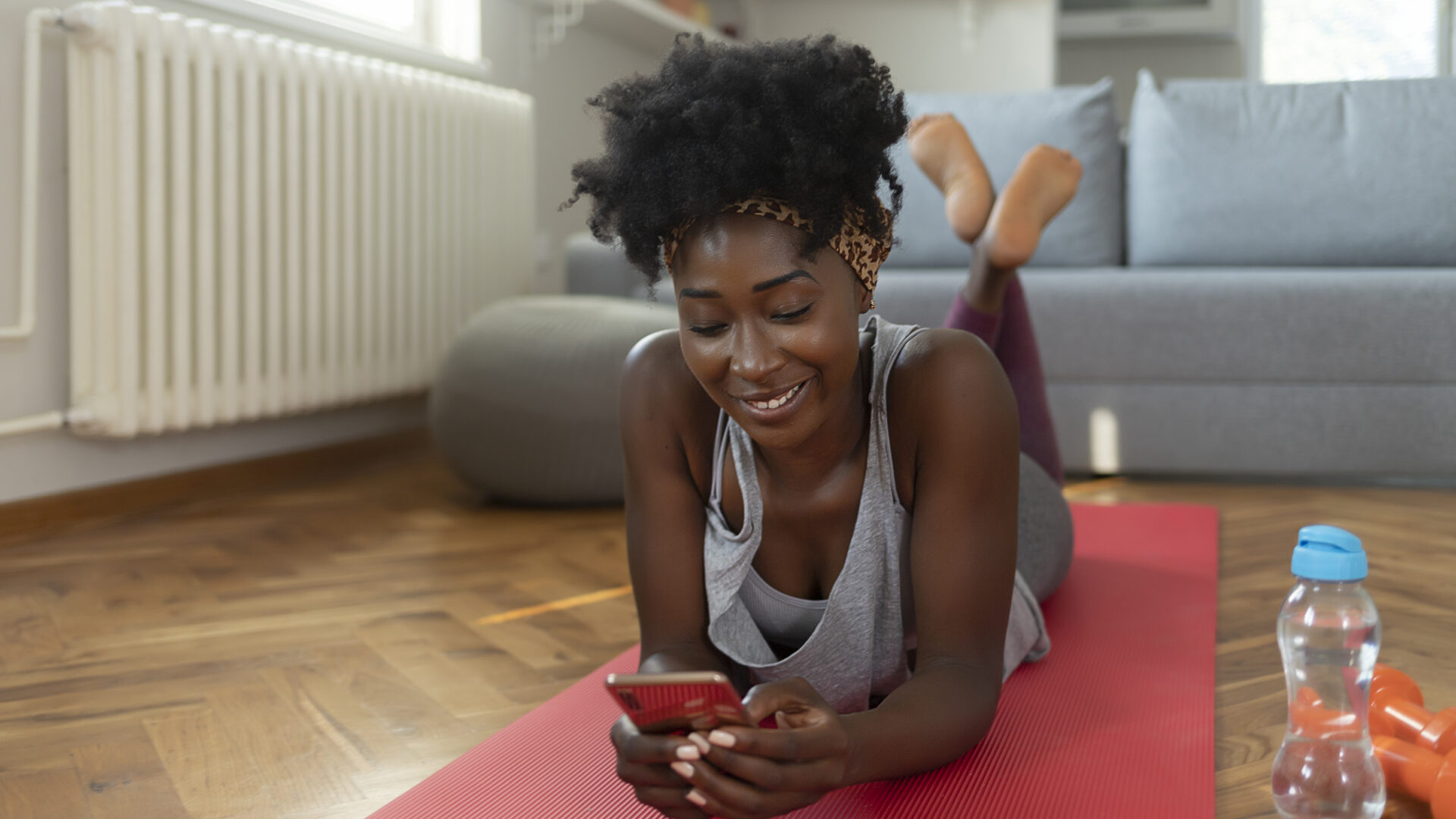
When entering a new year, one of the typical resolution goals most people have is to start fresh with a new fitness regimen. Nevertheless, for most people, that goal only lasts a couple of weeks, and then it’s back to square one. In the digital age, it’s easy to feel pressure to follow the trends of wellness influencers embarking on their workout journey. Despite many of these Instagram coaches and gurus’ typical tendencies, it’s not always realistic for the general consumer.
According to the International Health, Racquet & Sportsclub Association (IHRSA), approximately 12 percent of all new gym memberships are started within January each year, and 50 percent of new members quit within six months of going. Though the new year is the time to launch new goals and ideas for your fitness, it can take time to commit to those concepts once life hits.
Dr. Mary Branch, a cardiologist and a fourth-generation physician, realized she wanted a realistic relationship with fitness after her journey throughout high school. Her weight fluctuation battles opened her eyes to have a better bond with developing a healthy lifestyle. Now, she focuses on heart health in the BIPOC community and curates tips for herself and her patients to find rhythm outside the cookie-cutter Instagram workout aesthetic.
“The biggest thing is that we’re not always aware of how much activity we’re doing,” Branch tells GU. “Often, we think if we do a little bit of exercise that compensates for us being able to eat [many] calories, and we typically overestimate how many calories you’re burning.”
Starting a fitness journey can seem black and white for beginners. Typically, it feels like there’s only one standard for a successful wellness process on Instagram. Still, there are better ways to positively enjoy your new path of health without the stress of overworking yourself and your body.
Track Your Activity
According to Branch, tracking your activity allows for accountability during the fitness process. Apps like Noom, Trava, and Fitbits can help you see your progression and where you remain stagnant. “My patients love data tracking, and it works because it helps them with goals they need to reach,” she says. “Something is better than nothing.” It can be stressful when people are pressured to lose weight simply, but tracking your activity allows for better consistency with data tracking.
Allow Yourself To Fail
During the first few weeks of January, it seems you’re on top of the world and sticking to your rigorous schedule, but then life happens, and you fall off. According to IHRSA, it is estimated that 43 percent of people give up on their fitness goals within one month of making them. When we mess up our routine, we often take that as an opportunity to escape instead of pushing forward with our goals. “Regardless of where we are right now, we know we can get back,” Branch says. Rather than taking a more extended break, working through the ebbs and flows of a fitness journey is vital rather than starting from the beginning and repeating an intensive workout.
Be Open To The Trial And Error Period
Suppose you’re heavily on the lifestyle sections of TikTok and Instagram. In that case, you’re familiar with waking up early to start your day, specifically with your workout routine. Although it looks easy to jump into becoming an early riser, some people are not built to wake up before their body is ready to.
“For the first week, try to wake up early and see how that goes, and be honest with yourself,” Branch says. The key to finding your pocket when working out is consistency, not the time you wake up. When searching for the perfect time to exercise, if the morning time does not work out, the next step is to try during your lunch break if you work remotely or evening workouts and see how your body reacts to both to see what works.
Do Not Break The Bank Trying To Match The Trends
It can be easy to blow your money on meal plans and gym memberships, but that’s the materialism of exercising when, in reality, you don’t need those things to begin your wellness experience successfully. “People who have more control of their time and money can pay for someone to prepare their food,” Branch tells GU.
Unfortunately, with inflation rising, it can be more challenging for the average working-class citizen to prioritize spending money on things from their fitness wishlist. Data shows that 46 percent of members who quit going to the gym cite cost as their reason and personal training is disposable income. For those entering the beginning stages of fitness, start using resources in your own home, then as you progress, treat yourself to the things you see on Instagram.
Treat Your Workouts Like A Game
Though many try to implement the stereotypical expectations of working out, like consistency and giving ourselves grace, we must remember to include fun in these practices. If you’re heavily online and constantly checking on the hardcore fitness gurus, it can seem like it’s all work and no play. However, making your workouts light-hearted and fun can put you into a mindset of feeling like a kid again rather than another daunting adult task.
Overall, it’s time to dispose of the standard workout goals we all aspire to and tailor a new routine made for us by us. “Your health comes first because, without that, you can’t show up for yourself or anybody else,” Branch says. “You reap the rewards for a long time and save a lot on medical bills because you’re healthier. It can be a struggle, but you gain a lot if you think about the reward.”
About the Author: Kenyatta Victoria is the lead writer for Essence GU, working on all things pop culture, politics, entertainment and business. Throughout her time at GU, she’s garnered devoted readers and specializes in the Zillennial point of view.